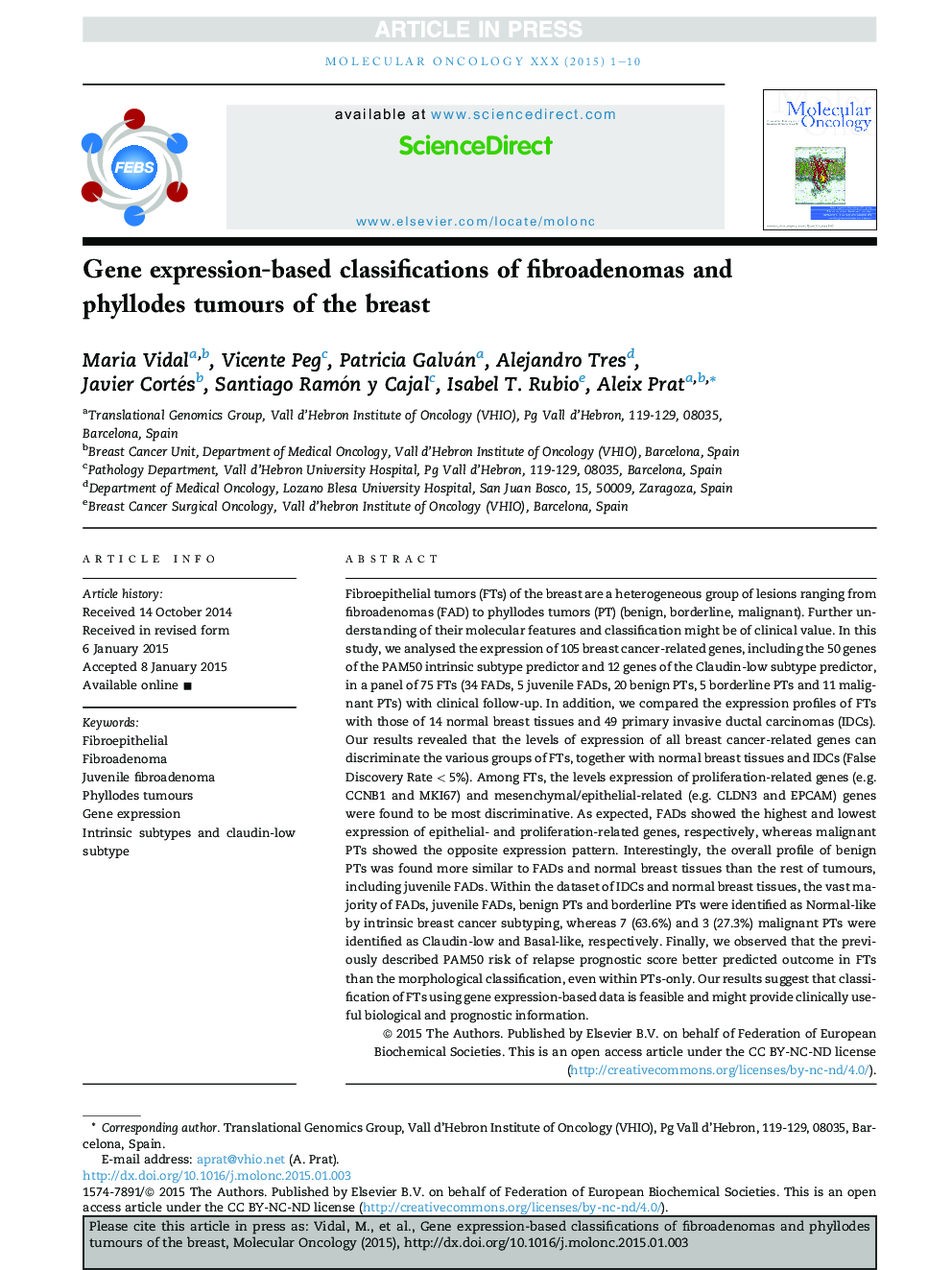| Article ID | Journal | Published Year | Pages | File Type |
|---|---|---|---|---|
| 10914599 | Molecular Oncology | 2015 | 10 Pages |
Abstract
Fibroepithelial tumors (FTs) of the breast are a heterogeneous group of lesions ranging from fibroadenomas (FAD) to phyllodes tumors (PT) (benign, borderline, malignant). Further understanding of their molecular features and classification might be of clinical value. In this study, we analysed the expression of 105 breast cancer-related genes, including the 50 genes of the PAM50 intrinsic subtype predictor and 12 genes of the Claudin-low subtype predictor, in a panel of 75 FTs (34 FADs, 5 juvenile FADs, 20 benign PTs, 5 borderline PTs and 11 malignant PTs) with clinical follow-up. In addition, we compared the expression profiles of FTs with those of 14 normal breast tissues and 49 primary invasive ductal carcinomas (IDCs). Our results revealed that the levels of expression of all breast cancer-related genes can discriminate the various groups of FTs, together with normal breast tissues and IDCs (False Discovery Rate < 5%). Among FTs, the levels expression of proliferation-related genes (e.g. CCNB1 and MKI67) and mesenchymal/epithelial-related (e.g. CLDN3 and EPCAM) genes were found to be most discriminative. As expected, FADs showed the highest and lowest expression of epithelial- and proliferation-related genes, respectively, whereas malignant PTs showed the opposite expression pattern. Interestingly, the overall profile of benign PTs was found more similar to FADs and normal breast tissues than the rest of tumours, including juvenile FADs. Within the dataset of IDCs and normal breast tissues, the vast majority of FADs, juvenile FADs, benign PTs and borderline PTs were identified as Normal-like by intrinsic breast cancer subtyping, whereas 7 (63.6%) and 3 (27.3%) malignant PTs were identified as Claudin-low and Basal-like, respectively. Finally, we observed that the previously described PAM50 risk of relapse prognostic score better predicted outcome in FTs than the morphological classification, even within PTs-only. Our results suggest that classification of FTs using gene expression-based data is feasible and might provide clinically useful biological and prognostic information.
Related Topics
Life Sciences
Biochemistry, Genetics and Molecular Biology
Cancer Research
Authors
Maria Vidal, Vicente Peg, Patricia Galván, Alejandro Tres, Javier Cortés, Santiago Ramón y Cajal, Isabel T. Rubio, Aleix Prat,
